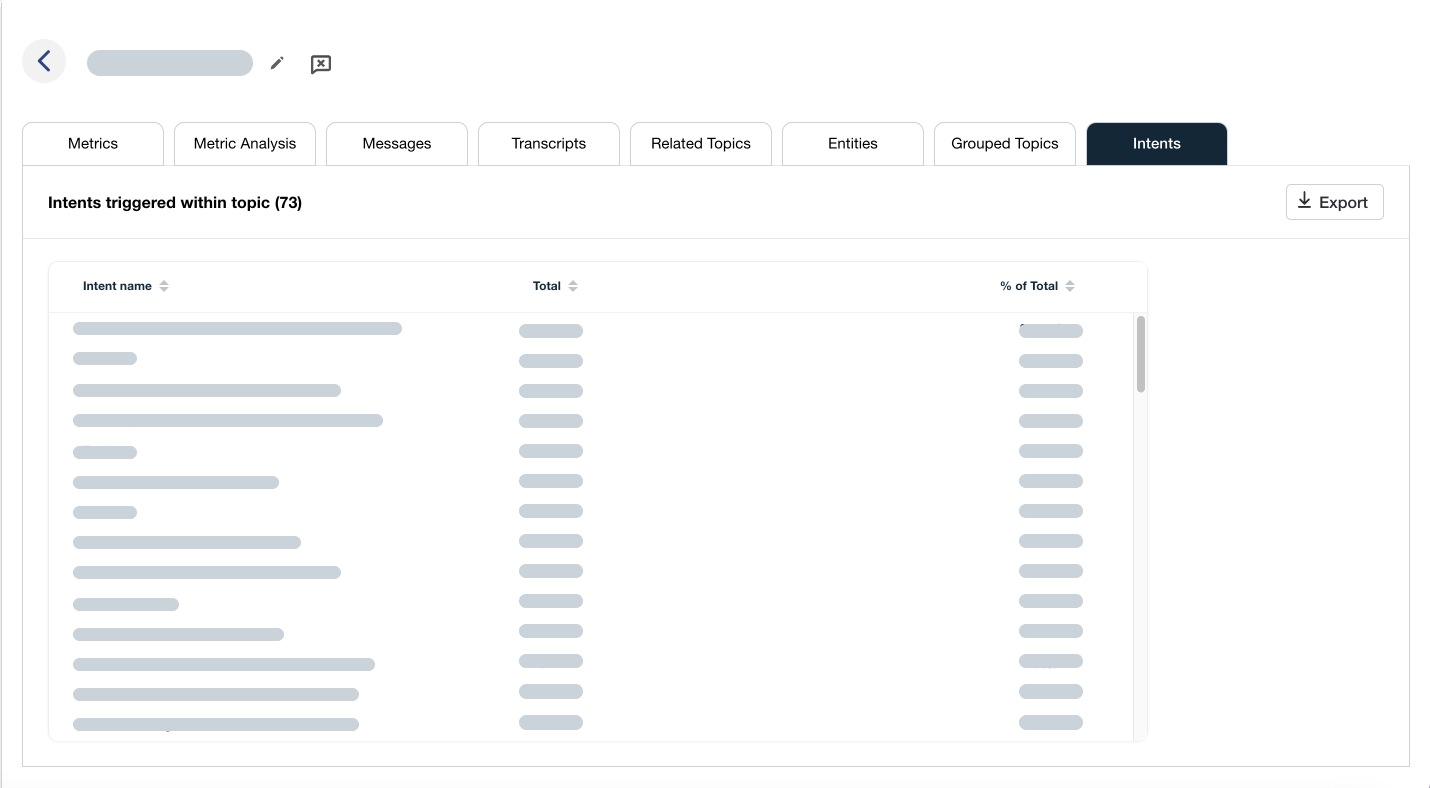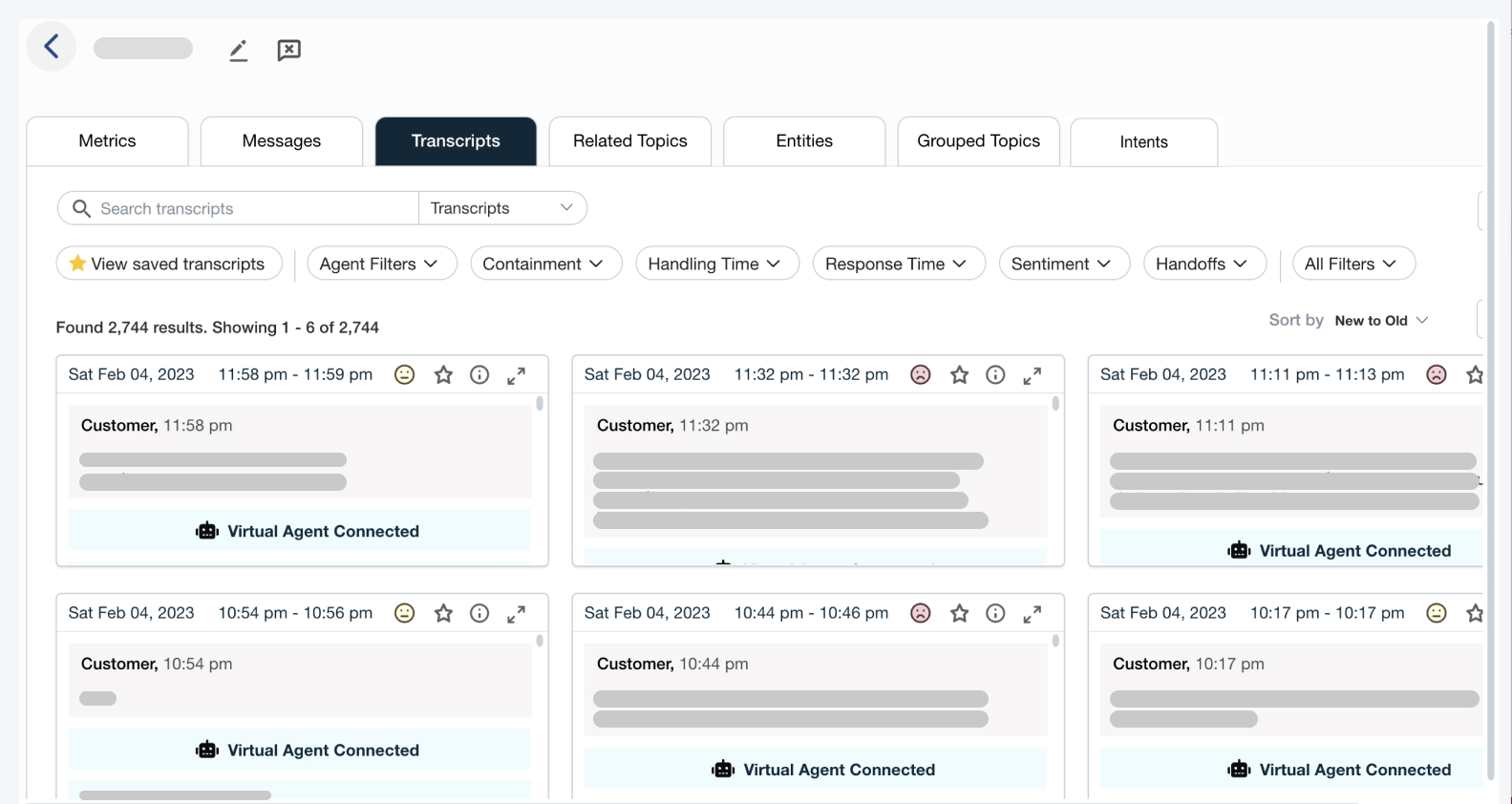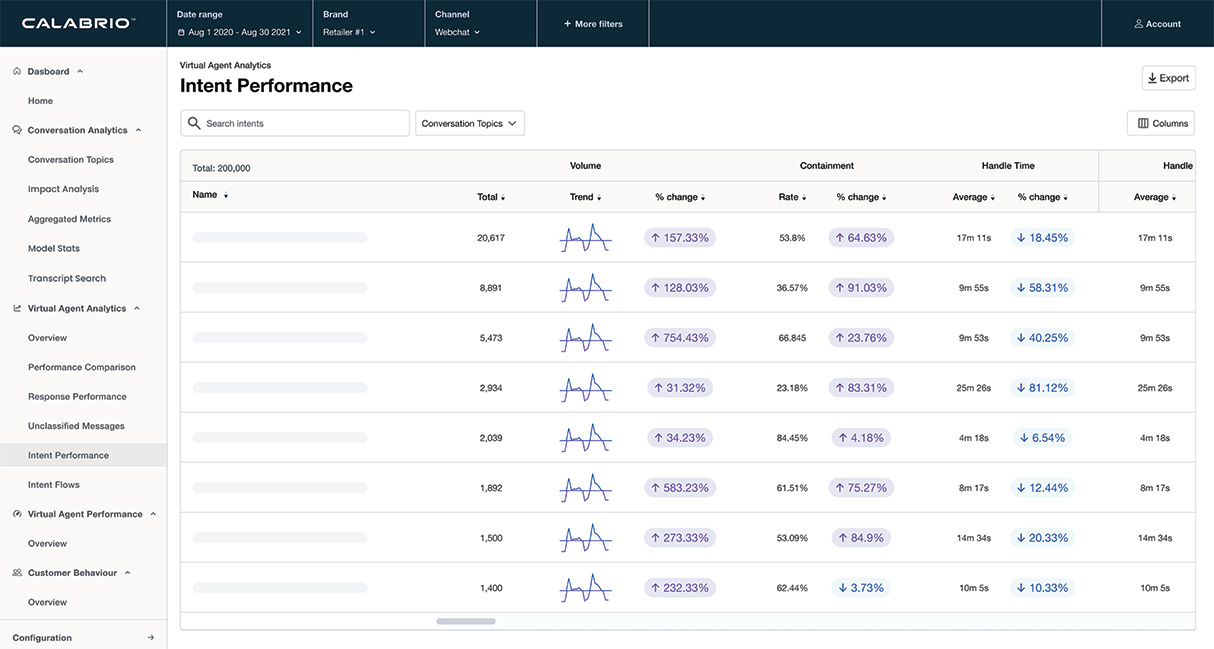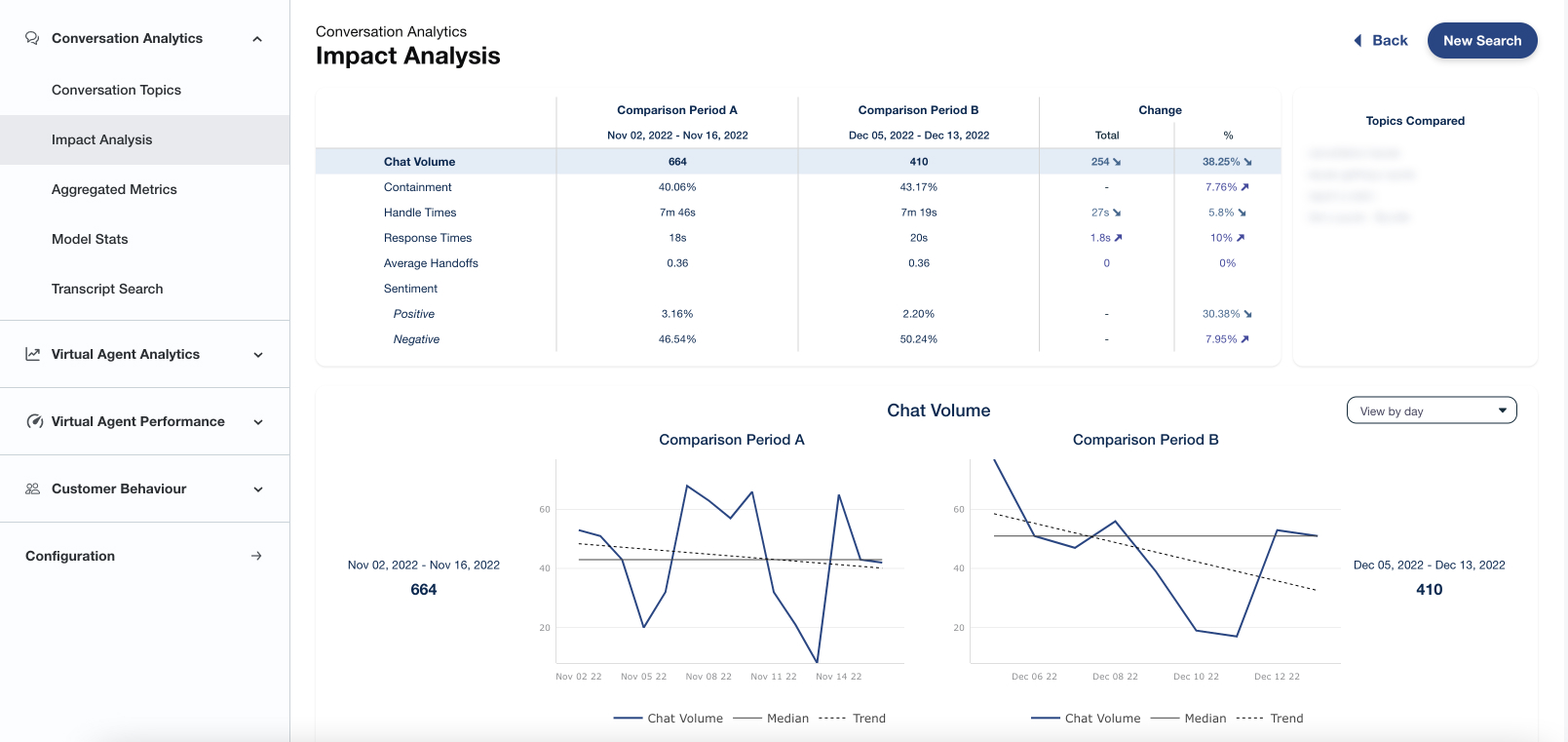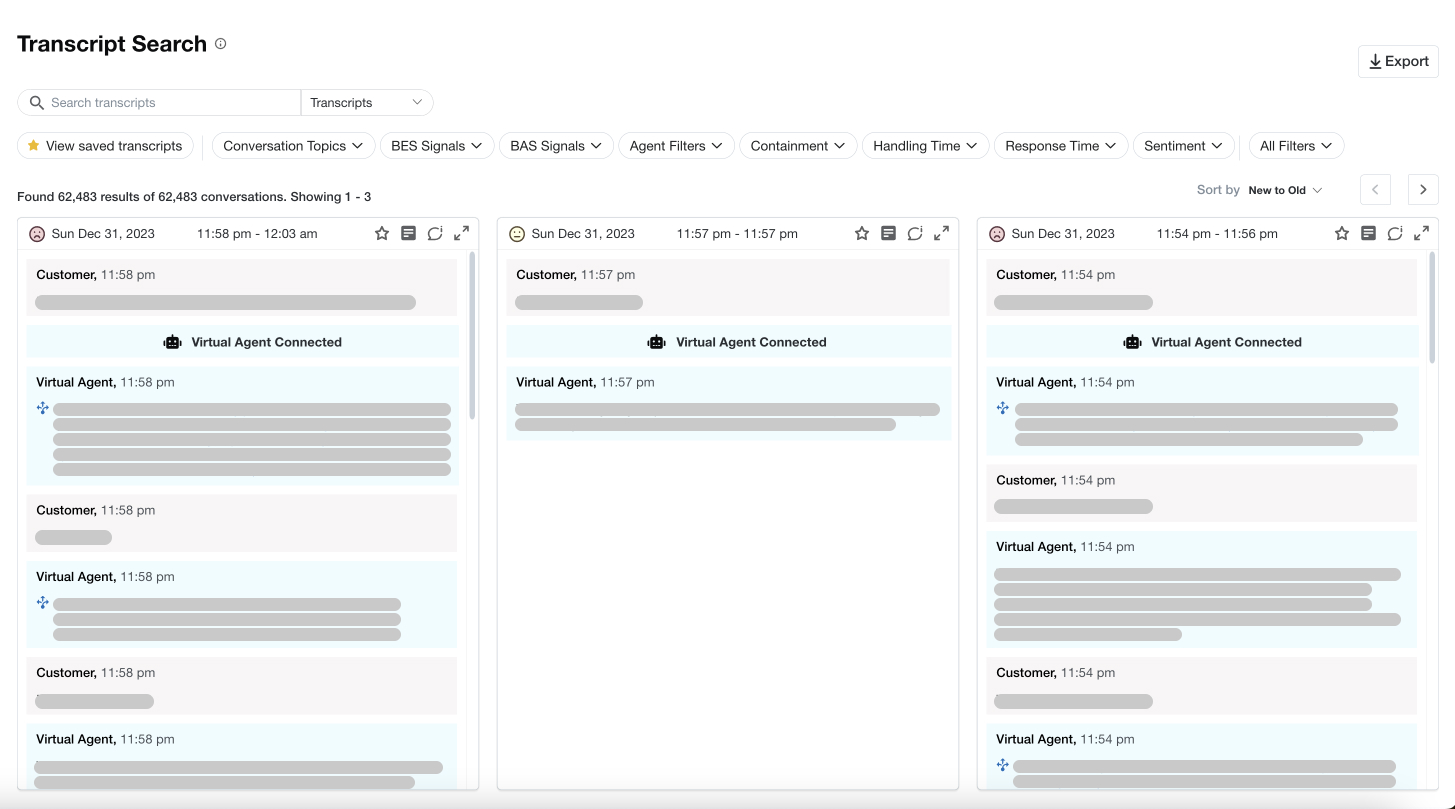Workforce Optimization
A Complete Guide to Workforce Optimization (WFO)
While the term Workforce Optimization is not new, it is only within the last few years that contact centers have begun to truly embrace the strategies inherent to WFO and begun to approach it as a holistic set of technologies and best practices. Expectations from a customer service perspective have never been higher—and will continue rising as new technologies arise and world-class contact centers raise the bar of what a truly great customer experience can be.
In this post we will introduce the concepts of WFO and outline some best practices around each aspect of a WFO solution. In addition, we will outline some criteria for choosing a WFO platform, including the features and functionality that best-in-class organizations are looking for when they are implementing a new solution.
In this guide you’ll Learn about:
What is Workforce Optimization & Why does it matter?
How Workforce Optimization fits within the contact center?
The history of Workforce Optimization
WFO terms to know
Who is WFO for?
The components of Workforce Optimization
Workforce Optimization Deployment options
The future of Workforce Optimization
Want to see these technologies in action?

What is Workforce Optimization (and Why Does it Matter)?
According to Wikipedia: “Workforce Optimization (WFO) is a business strategy that integrates contact center technologies for customer experience to promote operational efficiency. The strategy involves automating processes, data visibility, compliance on legislation and solving business problems related to staff. It [WFO] is used by call centers to improve workforce management and agent performance”. In other words, WFO is a blanket term that covers every functional aspect of running a modern contact center, including workforce management, quality management, business intelligence and analytics, as well as concepts like agent engagement and customer retention programs. In today’s ultra-competitive landscape, investing in a true WFO strategy is critical to staying relevant in the market place. Customer expectations have never been higher, and consumers are more-than-willing to shop around for the best experience possible—even if that experience comes at a higher cost.
However, it is important to also understand that each organization views WFO through a different lens based on specific priorities. These priorities typically vary by vertical, but they are also driven by the executive leadership and the company’s specific market strategy. This means that there are as many flavors of WFO in the customer service world as there are types of contact centers.
How Workforce Optimization Fits Within the Contact Center
While WFO is often viewed as just one component of a contact center, it’s more accurate to view WFO as the glue that holds a successful contact center together. Successful organizations have a clear WFO strategy that begins with their customers’ initial interactions with an Interactive Voice Response (IVR) system. The prompts and menus contained within this system should be designed with the end user in mind: Enable them to get the information they need as quickly and as intuitively as possible. If that information can be given automatically via the IVR without involving an agent, it saves organization money—and, more importantly, it saves time for the customer.


If it does become necessary to send a contact to a live agent, organizations with a focus on WFO will fully leverage the power of their Automatic Call Distribution (ACD) system to ensure that the customer is sent to the person who can handle the request as quickly and efficiently as possible. Today’s ACD platforms are incredibly powerful, making real-time decisions to ensure that contacts are routed in the most efficient manner at any given time of day, maximizing the resources that are available.
While these technologies are incredibly important and valuable in their ability to improve the customer experience, it is after the contact has routed through the automated systems that the functions most traditionally associated with Workforce Optimization (namely Workforce and Quality Management) come into force. The contact center must ensure not only that it has the human resources available to take on more complicated contacts, but that agents have the proper tools at their disposal to ensure they can handle the customers’ issues quickly and efficiently.
The History of Workforce Optimization
In the early days of the industry, contact centers were seen as cost centers and treated as a necessary evil in many ways. While this antiquated view of the contact center may still hold sway in a few isolated pockets, today the clear majority of organizations see the true value that the contact center is able to provide to the organization—and are investing accordingly in order to see even greater returns. In today’s virtual marketplace, the contact center is often the single point of contact that a client may have with any given brand. Forward-thinking organizations must put their best foot forward and give customers a positive contact center experience that stands out from the competition.
Fortunately, modern contact centers have access to technologies that early contact center managers could only dream of. Long gone are the of manual call evaluations and endless spreadsheets and “spreadmarts” to track contact center metrics. Today’s contact center leaders have a wide variety of innovative solutions at their fingertips, applying leading-edge technologies like machine learning and artificial intelligence to traditional contact center problems. In recent years, contact center technologies have made tremendous leaps in their ability to integrate tools like Speech, Text, and Desktop Analytics solutions within true Business Intelligence suites, empowering management teams to find solutions to their most challenging issues—and in many cases, to find solutions to problems they never knew existed.
However, this growth in capabilities corresponds with an all-too-common growing complexity in contact center technology solutions. One of the primary culptrits for complexity is the increasing consolidation in the contact center technology market. This consolidation has led to poorly integrated, difficult to use “suites” that are more like a roughly assembled patchwork—riddled with holes and redundant functionalities. Yet many of today’s best-in-class WFO vendors have responded by doubling down on things like ease-of-use and data transparency in order to enable their end-users to get the most out of their WFO investments.
WFO Terms to Know
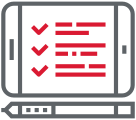
Compliance Call Recording
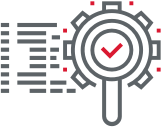
Workforce Management
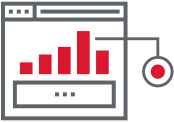
Analytics

Voice of the Customer

Quality Management

Gamification

Contact Center Reporting
Who is WFO For?
Contact centers of all sizes can benefit from the productivity and efficiency gains that come with a comprehensive WFO suite. Through the strategic use of WFO and analytics tools, small contact centers can now compete with customer service organizations of any size. Analytics tools, in particular, level the playing field by helping organizations use customer data to drive decisions around employee engagement, operational efficiency, brand alignment, customer engagement, risk and compliance, and sales acceleration—across the organization. Not all analytics tools are created equal. Contact centers should look for easy-to-use analytics solutions that present users with customizable dashboards and data visualizations, which eliminate the need to invest in hiring data scientists and professionals with advanced degrees. These ease-of-use qualities are important for any size contact center, but they grow in importance as organizations (and their budgets and resource pools) grow smaller.

The Components of Workforce Optimization
Workforce Optimization is really a strategy that helps organizations ensure that they are maximizing the skills of their workforce to enable a better experience for their end customers. Every organization goes about this mission in a slightly different way, but there are some key building blocks that all contact centers use to build the foundation of their WFO platform. These building blocks include:
Quality Management
Quality Management
A well-defined Quality Management program is the most important part of any organization’s customer satisfaction strategy. Customers need to be treated with respect and have their toughest questions and issues solved in a timely fashion. Ensuring that all agents in the contact center can meet those requirements is the job of the Quality Assurance (QA) team. By reviewing real-world contacts and providing feedback, coaching and training to agents, the QA team can directly impact the level of service their contact center is providing.

QM Functionality
When investing in a Compliance Recording and Quality Management platform, organizations need a set of tools that will enable them to accomplish their goals. As obvious as it sounds, achieving this can be surprisingly complicated. In most cases, organizations are trying to balance the needs of the contact center with those of the IT/IS department. From an infrastructure and security perspective, the IT/IS department is concerned primarily with platform reliability and security, as well as making sure the system is compliant with all regulations. For this reason, stable and secure cloud-based solutions are becoming the norm for many organizations of all sizes.
While the contact center is concerned with security and compliance, they are also focused on quality assurance and agente performance goals. Since every contact center has a unique set of priorities, a QM platform must have a flexible evaluation platform that allows for customization and innovative scoring systems. Reporting is also a critical aspect of any QM program, so an intuitive, customizable reporting system is another requirement.
In the last decade, the contact center industry has truly embraced the omni-channel world, giving their clients the freedom and flexibility to communicate in whatever form feels most convenient and efficient at any given time. To deliver on this flexibility, modern multi-channel contact centers must treat every channel with the same degree of importance as they have always treated the voice channel. When evaluating any Recording and QM platform, ensuring that the platform has the ability to fully collect and securely store any non-voice channel communications—and that these channels can be reviewed, evaluated and made available for coaching—is vitally important.

QM Best Practices
Regardless of your organization’s specific contact center QM goals, here are five established best practices for building and maintaining a successful QM program:
- Update QA forms regularly: At a minimum, every contact center should perform a QA form review on an annual basis. The purpose of this review is to ensure that the QA form still reflects the organization’s priorities and goals as well as ensuring every question within the QA form is coachable and actionable.
- Set goals that maximize QA time: Evaluating at least two contacts per channel per agent is an ideal goal to work toward. It allows for enough data to effectively coach your agents and track performance over time. If you have the ability to evaluate a larger number, it provides your system with even more data, enhancing the accuracy and relevancy of your QM insights.
- Calibrate evaluations on a regular basis: QM metrics are only as accurate as the data feeding into them—and that data often depends on the human inputs from your QA team. Regularly calibrating evaluations across your entire QA team ensures all evaluators are assessing contacts through the same lens.
- Include agents in the QA process: Allowing agents to review and score their own contacts provides them with a greater understanding, as well as a sense of ownership in the QA process.
- Create a Best Practices Library: This library should include examples of the best interactions your agents have had in the past, as well as some of the worst, and creates an excellent training and coaching tool.
Calabrio Quality Management
The one-stop solution for performance and quality improvement.
Workforce Management
Workforce Management (WFM)
The goal of any Workforce Management (WFM) team is consistency. From a service level perspective, you want to provide a consistent experience to your customers—each and every time they reach out to the contact center. Service level standards vary greatly by industry and channel, but the goal should always be to answer inbound contacts in a consistent time frame and to ensure you’re maximizing the value of your contact center staff by forecasting and scheduling the right number of people with the right skills at the right time.
Great scheduling depends on accurate forecasting. And as any meteorologist can attest, predicting the future is no exact science. However, when knowledgeable and experienced people have access to the right forecasting tools, your WFM program will thrive.
WFM Functionality
In the early days of contact centers, prior to the advent of advanced contact routing solutions, the job of the WFM team was a bit simpler. Agents would only handle one type of call on any given day, so it was simply a matter of predicting the number of contacts you would receive based on historical data—and scheduling agents accordingly.
Today WFM is much more complex. Agents generally have multiple skills and in many cases are responsible for handing contacts from multiple channels—sometimes simultaneously. This makes the job of the WFM Scheduler much more complicated, requiring a deep level of understanding of the impact that this degree of multi-skilling has on the contact center as a whole.
When looking at any WFM technology, there are a few key requirements that every organization should be looking for:
Tools for generating accurate forecasts
In most cases, you will be forecasting based on historical data, so being able to manage this data is vitally important.
A true multi-skill scheduling functionality
In order to maximize available resources, you must accurately model the way our agents handle contacts. So, being able to precisely define available agents’ skills and channels is critical.
Real-time adherence monitoring and reporting
The quickest way to ROI with WFM is to simply hold agents accountable to their schedules. Any WFM platform must have a robust, real-time and historical adherence-tracking functionality.
Intraday toolset
No matter how accurate forecasts get, things can (and do) change in unpredictable ways. The job of a WFM analyst is always going to require last-minute adaptations and dynamic decision-making. This requires a set of tools that enable the WFM Intraday Analyst to adjust and make changes on the fly.
Intuitive agent interface
The often-overlooked users of a WFM solution are the agents themselves. Agents need to be able to access their schedules and make requests in a simple-to-use interface. This is the primary way they should communicate with the WFM team.
Robust historical reporting
The WFM team lives and breathes graphs and statistics. Put simply: A customizable, intuitive reporting toolset is a must.
WFM Best Practices
Set a realistic adherence goal for your agents
No one can adhere to their schedule 100% of the time and it is not realistic to hold agents accountable to this standard. The WFM team should set a realistic adherence goal for their agents based on factors like average handle time and the number of state changes an agent goes through on an average day. If your WFM team spends any time in their day adjusting breaks and lunches after the fact because an agent was stuck on a phone call, this is a good indication that your adherence goals are too high.
Minimize the time between schedule creation and production
Many organizations like to generate schedules months in advance. The downside to this strategy is that any changes in contact volume, handle time or available staff that happen in the meantime won’t be reflected in the schedule—or will require a whole new schedule to be generated. By generating final schedules a week or two in advance, you maximize your chances of having an accurate schedule—and minimize the need for re-working.
Allow flexible scheduling
Too often, the WFM team falls back to standardized schedules (8-5 Mon-Fri, 10-7 Sun-Fri, etc.). These schedules are easy to manage from a WFM perspective, but don’t necessarily fit the needs of contact center agents’ lives and their requirements for work-life balance. Finding ways to increase schedule flexibility while still meeting the requirements of a forecast is a great way to increase agent engagement.
Use Overtime and Voluntary Time Off to your advantage
Incentivizing agents to leave early or come in during times of high need is one of the best ways to save your contact center money in the long run.
Review WFM practices and goals annually
When was the last time you reviewed your service level goals to ensure they are still realistic and within your customers’ level of tolerance? An annual review of WFM processes and goals will ensure that you are always on the forefront of delivering world-class customer service.
Elevate Your Approach to Workforce Management
Smart Scheduling and Dynamic Employee Engagement
Customer Interaction Analytics
Customer Interaction Analytics
The contact center and the infrastructure surrounding and supporting it has always contained a massive amount of data—and the challenge has always been bringing that data together in a usable way. Modern analytics tools solve this challenge more quickly and cost-effectively than ever, bringing customer interaction data to life and allowing the contact center to tell the story of how an organization is performing in its mission to serve its customers.
As part of this story, customer interaction data also contains key insights on employee performance. Those same advanced analytics tools enable the contact center to catalog and measure employee performance data to unlock the true potential of our workforce. By benchmarking the behaviors of top-performing staff and using those benchmarks to coach and train the contact center staff at large, leadership can provide clear direction to agents while empowering them to track their own progress with key metrics.
Analytics Functionality
Best-in-class organizations are looking for the latest technology in their analytics platform to enable them to stay ahead of the curve. With the typical day of today’s contact center growing more complex, an analytics platform must be flexible and powerful enough to keep pace. Critical functionality include the following:
Speech Analytics
This is the technology that most people think of when they hear the term “contact center analytics.” Speech analytics tools have been available for many years, but recent and significant improvements in this technology dramatically increase both the accuracy and the speed of analyzing voice interactions. Since the vast majority (~64%) of contact center interactions still take place through voice channels, phonetics and speech-to-text (also called Large Vocabulary Continuous Speech Recognition or LVCSR) analytics are essential to a contact center analytics program.1 Each has its relative strengths which complement the other. The use of phonetics is great for detecting slang, jargon, and regional accents. The use of speech-to-text is great for in-depth investigation, ad hoc searching, and helping you find things you weren’t even looking for. Best-in-class contact center analytics solutions combine speech and speech-to-text analytics to give you everything you need to examine customer calls.
Text Analytics
As customers increasingly turn to text-based channels like email, chat and social media, an analytics solution must be able to apply the same level of scrutiny to these written communications as it would to the spoken word. Fortunately, text-based interactions are actually much easier for analytics engines to digest, because they don’t require any special phonetic recognition or transcription. In essence, text analytics tools blend the capabilities and strengths of phonetics and speech-to-text tools to your text-based customer interactions. And because the text is already transcribed, text analytics avoid many of the downsides or shortcomings of their speech counterparts: there’s no risk of transcription error and there’s no transcription time or processing requirements.
Desktop Analytics
A powerful new tool that is rapidly growing in use across the contact center world, desktop analytics correlates the content of an interaction (what your customers and agents are saying) with agent desktop activity (what your agents are doing). This allows managers to see the ways that their staff are utilizing the tools that are available to them, and to find and implement new and more effective tools and techniques—justifying these initiatives and investments based on real analytical data.
Predictive and Prescriptive Analytics
Predictive analytics tools use current and historical facts (data) to make predictions about the outcomes that most affect the contact center and enterprise—and recommendations about what to do next. In short, these analytics tools shift their focus from answering the question, “What has happened?” to telling yo, “What now?” and “What next?” Advanced predictive modeling, machine learning (ML) and artificial intelligence (AI) all drive these intelligent predictions. Predictive analytics tools leverage call recordings, quality management scores, customer surveys, Net Promoter Score (NPS), as well as text and speech analytics to create mathematical models of both customer and agent behavior. This enables predictive quality evaluation scoring and predictive NPS for 100% of customer interactions, allowing the organization to take proactive measures to manage agent performance, improve customer engagement, and gain deeper insights into the customer journey.
Analytics Best Practices
Start Small
With a new analytics toolset, it is tempting to dive in head-first and investigate every question you have ever had. This can lead to what some refer to as “Analysis Paralysis.” In your early efforts, it is important to stay focused on one or two key issues, working through them systematically until you have a clear process in place.
Be prepared to act
While it’s thrilling to get objective answers to critical questions in your organization, it’s not the answer that matters—it’s the action you take as a result. If you are not prepared to act on the findings from your analytics initiatives, you are simply wasting time.
Follow up
After implementing an action plan, it is critical that you track your progress against key metrics that you expect to change. Reporting this progress—both up the chain to organizational leadership, as well as down the chain to your agents—gives you valuable buy-in that will propel future analytics work.
Process is king
As with any WFO project, having a clearly defined process from start to finish is incredibly important for analytics. At a high level, this process should include developing a question and hypothesis, collecting data, creating an action plan, and conducting follow-up reporting.
Look beyond the contact center
Analytics isn’t just a contact center tool. Your customer interactions contain a wealth of information and insights that directly tie to key business objectives across your organization. Involve your Marketing, Sales, and Operations departments in your analytics processes. Look for new ways to apply your contact center analytics tools to questions, problems and business challenges that exist beyond the contact center. This will help you truly maximize the value you receive from your analytics platform.
Workforce Optimization Reporting
Workforce Optimization Reporting
The business world has been buzzing about Big Data for decades now. The contact center is the classic example of a Big Data problem: Recorded phone calls, emails, chats, social media posts, customer comments, CRM, ERP, HRMS, and many other sources of data are coming together in one place; how do you make sense of all of this data? As more organizations have begun working to answer this question, Reporting and Business Intelligence have become a major focus for the contact center.
The great news is that, in recent years, new Business Intelligence tools have become dramatically more accessible, more cost-effective and more intuitive—allowing just about anyone in the organization to slice and dice their data into a useful and meaningful format with just a few button clicks. These new tools empower next-generation contact centers and other organizations to be able to use their data to tell the stories and communicate the most critical information they have to the organization and an easy-to-understand way using concise reporting and clear visualizations.
Reporting Functionality
Flexibility: Every organization’s reporting requirements are as unique as those organizations themselves. This makes flexibility and customization the most critical qualities in any contact center reporting platform.
Data integration: As the contact center becomes the hub for an ever-expanding set of data streams, you need the ability integrate these data sources and create blended data reporting and visualizations that removes data from traditional silos.
Automation: Data collection should be automated so that the latest information is always available to the reporting engine without manual work. The reports and visualizations themselves should also allow for automation so that regular, recurring reports can be delivered to the stakeholders within an organization with minimal effort.
Enterprise-wide capabilities: Best-in-class reporting and Business Intelligence platforms include true Data Mart functionality that extend their potential to use cases across the entire organization—not just the contact center. Seeking out these enterprise-capable solutions increases the value of the tools—and helps the contact center secure funding for any BI projects, since the cost can be shared between multiple groups in the organization.
Reporting Best Practices
Determine key stakeholders—but think beyond the contact center: The first step in building a WFO reporting program is to determine which departments, teams and work groups your reports will be serving. This list should extend beyond the contact center—consider every element of your organization that is impacted by customer experience, from sales and marketing, to supply chain, to top-level leadership.
Gather reporting requirements—but don’t limit yourself to common or existing metrics: Once you have your stakeholders, begin determining your reporting requirements by figuring out what questions you’re attempting to answer and which business problems you’re attempting to solve. While it may not be possible to develop a metric that meets every need on this list, it’s important to start with what you want to know—rather than what metrics you already know exist.
Avoid redundancy—and ensure consistent formulas: Traditionally, many contact centers have taken an ad hoc approach to reporting. An individual user comes with a specific reporting request or need, and a unique report is developed based on that need. But many of these one-off reporting requests end up using the same data and providing overlapping metrics. In practice, this is not only hugely inefficient—wasting time re-creating overlapping or entirely redundant reports—but it also expands the risk of competing metrics. When two similar reports are created separately, they may use different formulas or approaches to measuring the same thing. As you can imagine, this can lead to big internal problems, as different departments and different programs are monitoring—and acting upon—different versions of reality.
Think big—and leverage enterprise-wide data integration: As you draft reporting requirements and develop reports to meet those needs, don’t let traditional data silos limit your thinking. If a marketing leader wants to combine ACD and QM system data with CRM and marketing automation system data, you should expect a best-in-class contact center reporting platform to be able to tap into those disparate data streams and synthesize a report that gives that cross-enterprise visibility.
Workforce Optimization Deployment Options
Workforce Optimization Deployment Options
When implementing a new WFO platform, choosing the deployment method that works best for your organization is almost as important as the platform itself. Organizations of all types are increasingly choosing cloud-based deployments of all their major enterprise systems. Cloud-based WFO offers a wide range of advantages (discussed below), but it’s not right for every organization. Fortunately, best-in-class WFO platforms give you the freedom and flexibility to choose your deployment model—without sacrificing functionality, scalability or cost-effectiveness. It’s important to begin by reviewing the pluses and minuses of each deployment method to identify which model fits your contact center’s unique needs and requirements:

On-Premise Deployment
Until recently, the on-premises deployment model was the only option available for companies looking to implement a WFO suite—and it’s still the model most organizations are familiar with. In an on-premise deployment, the organizations supplies its own hardware to support the software platform and all of the infrastructure surrounding it. While software maintenance contracts are common in the WFO industry, the customer is responsible for any hardware-related issues and the expenses associated with supporting that hardware. The primary benefit to an on-premise deployment is that the organization retains complete freedom to secure the software environment in the way that they see fit—making the on-premises model very appealing for organizations that have extremely specific security requirements.

Cloud Deployment
In the early days of cloud deployments, there were understandable concerns regarding security, as well as frequent functionality limitations (in short, many cloud deployments were basically “lite” versions of the software). However, cloud technology has dramatically improved, and today’s leading cloud-based software offers security and functionality that is equal—and often better—than on-premises versions. Many forward-thinking organizations, including some of the most high-assurance, security-minded companies in the world, now embrace the inherent stability and security of cloud-based solutions. In addition to stability and security, a major benefit of cloud-based deployment is that all maintenance and hardware costs are covered by the vendor rather than the client. This allows the organization to focus more on their core mission, and less on infrastructure requirements. Automated updates, including new and enhanced functionality and security patches, are another key benefit to moving to the cloud—and particularly beneficial in the WFO space, where the pace of change and technology improvement continues to accelerate. Finally, cloud-based deployments typically provide greater scalability—both up and down—allowing organizations to avoid major capital outlays, only pay for what they need, and be able to quickly ramp up to respond to seasonal spikes or other volume increases.
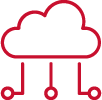
Hybrid Deployment
In a hybrid deployment, the organization retains some portion of the software infrastructure on-premise, with other core technology in the cloud. This can be a good middle ground for organizations that have specific security requirements, allowing them to, for example, maintain full, on-premises control of data storage, while shifting the burden of supporting the rest of the WFO suite infrastructure into the cloud and onto the vendor.
The Future of Workforce Optimization
As the view of the contact center continues to change from that of a cost center to a true resource that adds value to the entire organization, we’ll continue to see tremendous advances in contact center technologies and their applications. In particular, machine learning and artificial intelligence technologies will rapidly make valuable contact center data even more accessible than it is today. Even the most advanced contact centers are frequently still in the early stages of understanding the customer journey and how it applies to their day-to-day initiatives. The most important part of those integrated WFO and customer experience intelligence programs, however, are simply getting started. By following some of the best practices detailed in this guide, your organization can begin building and implementing a forward-thinking WFO strategy that will quickly begin delivering measurable value—from improving workforce productivity and operational efficiency, to driving agent engagement and performance improvements, to ultimately enhancing your customer experience to drive the success and growth of your organization.


